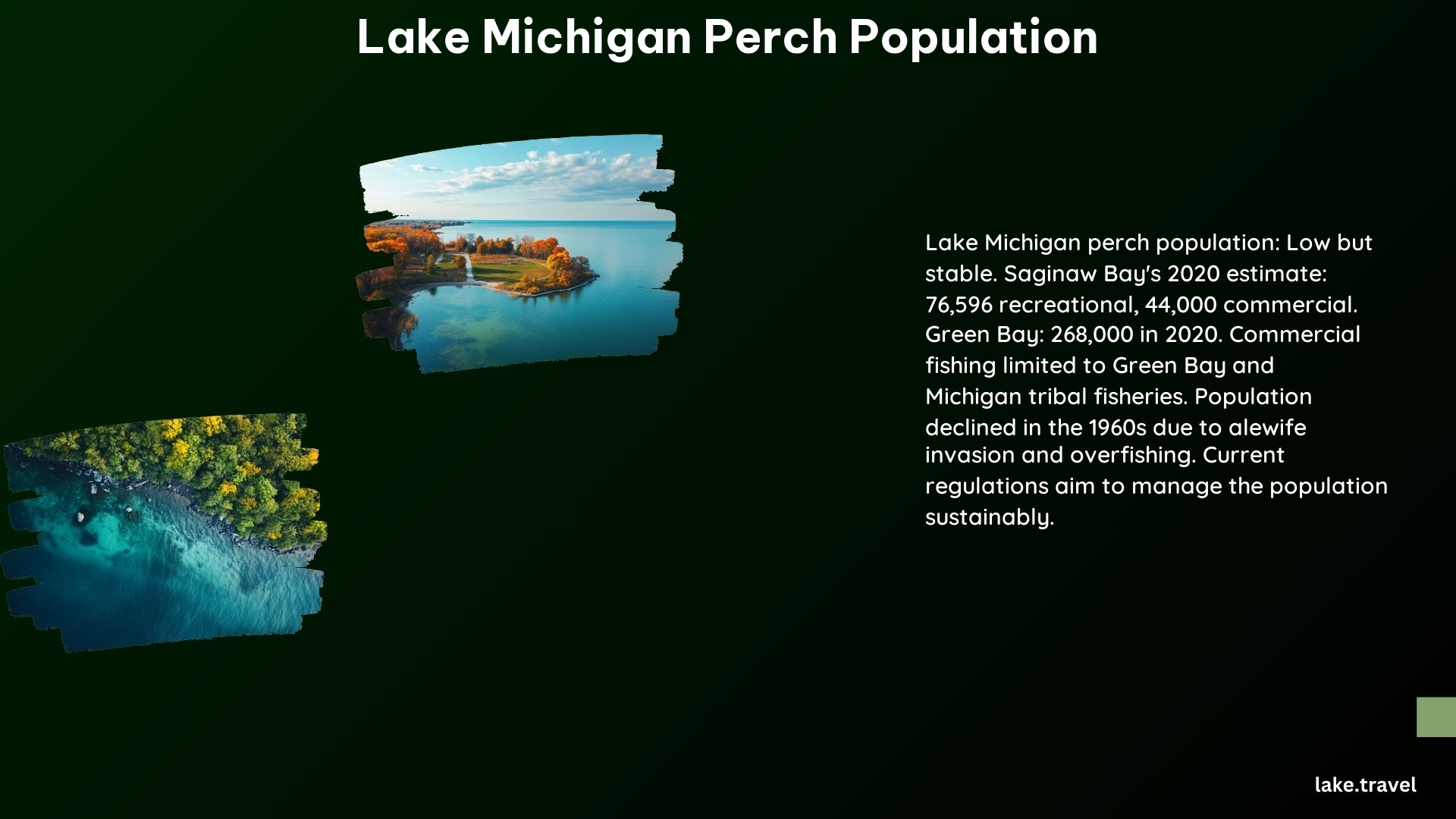The current trend in yellow perch populations in Lake Michigan is characterized by low but stable numbers. The population has declined significantly since the 1980s, with various factors contributing to this decline.
Current Trend

The yellow perch populations in Lake Michigan are currently at lower levels compared to the 1980s, but they have stabilized in recent years. However, there are regional variations across the lake, with some areas like Saginaw Bay and Green Bay having higher productivity and more stable perch populations compared to the main lake basin.
Factors Contributing to Decline

Several factors have contributed to the decline of yellow perch populations in Lake Michigan:
-
Invasive Species: The presence of invasive species like alewives and zebra mussels has significantly impacted yellow perch populations. Alewives feed on newly hatched yellow perch, while zebra mussels reduce the availability of phytoplankton and zooplankton, essential for young perch growth.
-
Overfishing: Historical overfishing, particularly in the 1980s, contributed to the decline of yellow perch populations.
-
Habitat Changes: Changes in water quality and habitat, such as increased vegetation in some areas, have also affected perch populations.
Conservation Efforts
Agencies and organizations are working to manage and conserve the yellow perch population in Lake Michigan:
-
Bag Limit Reductions: The Michigan Department of Natural Resources (MDNR) has reduced bag limits for yellow perch from 50-a-day to 25-a-day to help manage the population and prevent overfishing.
-
Monitoring and Research: Agencies like the MDNR and the Great Lakes Fishery Commission continuously monitor fish populations and conduct research to better understand the dynamics of yellow perch populations and develop effective management strategies.
-
Habitat Restoration: Efforts to restore and protect habitats, such as nearshore areas and wetlands, are crucial for maintaining healthy perch populations.
Key Statistics and Data Points
-
Saginaw Bay: The 2020 estimate of yellow perch abundance was 76,596 in recreational fisheries and 44,000 in commercial fisheries.
-
Green Bay: The 2020 estimate of yellow perch abundance was roughly 268,000.
-
Historical Comparison: Yellow perch populations in Michigan waters were around 2-3 million per year in the 1980s, compared to current recreational harvests of around half a million.
Conclusion
The Lake Michigan yellow perch population has faced significant challenges over the years, with a decline in numbers since the 1980s. However, conservation efforts and ongoing research are helping to stabilize the population and manage the factors contributing to its decline. By understanding the current trends and taking proactive measures, we can work towards ensuring a healthy and sustainable yellow perch population in Lake Michigan for years to come.
References
- Great Lakes Fishery Commission. (n.d.). State of the Lake – Great Lakes Fishery Commission. Retrieved from https://www.glfc.org/state-of-the-lake.php?lake=2
- Great Lakes Fishery Commission. (2021). Status of Yellow Perch in Lake Michigan 2019-2020. Retrieved from https://www.glfc.org/pubs/lake_committees/michigan/yellow_perch/Status%20of%20YEP%20in%20LM%202019-2020%20%282021%29.pdf
- Wells, L. (1977). Changes in yellow perch (Perca flavescens) populations of Lake Michigan, 1954-75. Journal of the Fisheries Research Board of Canada, 34(10), 1821-1829. Retrieved from https://pubs.usgs.gov/publication/1000468
- Great Lakes Now. (2021). Low but Stable: Yellow perch populations in Great Lakes’ bays and open waters. Retrieved from https://www.greatlakesnow.org/2021/07/yellow-perch-low-populations-wisconsin-michigan-fishing/
- Michigan-Sportsman. (2023). Lake Michigan perch. Retrieved from https://www.michigan-sportsman.com/threads/lake-michigan-perch.746160/.
